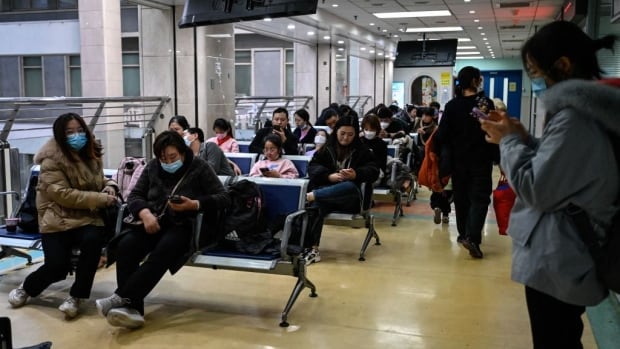Infection
China tells WHO no ‘novel pathogens’ detected after pneumonia clusters reported among kids
Reports of clusters of unexplained pneumonia among children in multiple cities in China made headlines this week. Yet Chinese authorities and close watchers of the situation say the rise in illness is likely linked to known threats circulating after the country lifted public health restrictions — not a new pathogen.
On Thursday, the World Health Organization (WHO) announced it had held a teleconference with Chinese health authorities, who provided data showing an increase in outpatient visits and hospital admissions of children due to well-known illnesses in recent months.
The WHO said the data showed a rise in illness since October that is linked to the circulation of several well-known viruses: influenza, adenovirus, and respiratory syncytial virus (RSV). It also showed increased illness since May linked to Mycoplasma pneumoniae. The bacteria causes a common childhood infection and is known for a mild form of disease called atypical pneumonia, often called walking pneumonia.
“Some of these increases are earlier in the season than historically experienced, but not unexpected given the lifting of COVID-19 restrictions, as similarly experienced in other countries,” the WHO noted.
Chinese health authorities didn’t report any changes in symptoms and said there has been “no detection of any unusual or novel pathogens.”
That includes both Beijing and Liaoning, two cities nearly 700 kilometres apart that were highlighted in a Tuesday alert from the Program for Monitoring Emerging Diseases (ProMED). The public infectious disease surveillance system described clusters of undiagnosed pneumonia cases among children, based on a report from a news station in Taiwan.
Chinese authorities pinned those cases on the “aforementioned general increase in respiratory illnesses due to multiple known pathogens” and told the WHO the spike “has not resulted in patient loads exceeding hospital capacities.”
China recently launched enhanced outpatient and inpatient surveillance covering a broad spectrum of viruses and bacteria, including — for the first time — M. pneumoniae, the WHO said in its statement. This “may have contributed to the observed increase in detection and reporting of respiratory illness in children.”
China’s COVID-19 restrictions in place through 2022
China also maintained a zero-COVID policy for several years, only lifting strict restrictions at the end of 2022. Since then, various respiratory viruses have started circulating again, noted Dr. Zain Chagla, an infectious diseases specialist with McMaster University in Hamilton, Ont.
“But that doesn’t mean that younger populations have necessarily seen all these viruses yet,” he added. “They may have seen only a handful of them.”
A novel pathogen would likely strike the entire population at once, Chagla noted. The early details from China suggest primarily children are impacted, he said, .
American pediatrician and vaccine scientist Dr. Peter Hotez agreed. Speaking to CBC News, he said younger age groups may simply lack immunity from exposure to viruses and bacteria that commonly circulate, but were kept at bay over the last few years.
Other countries that started lifting public health restrictions earlier — including Canada — also experienced surges of various infections in the months that followed. Here, a triple threat of flu, COVID-19 and RSV flooded children’s hospitals a year ago, leading to long wait times, shortages in beds and staff, and in some cases, cancelled surgeries.
“[Chinese authorities] certainly have no reason to obscure the information,” Hotez said.
“And look, surges on pediatric hospital beds are not unusual. We have experienced that in the United States and we have experienced it in Canada, so there is nothing to think that there is anything unsavoury going on,”
Still, Chagla said ongoing information-sharing is crucial. China was previously accused of withholding data around the COVID-19 pandemic, and has faced extensive criticism over a perceived lack of transparency.
“This is an area of the world where we’ve had two pandemics shown up, which have been reported first in ProMED … so there’s always a need for caution, appropriate surveillance and testing to make sure nothing else has happened,” Chagla said.

